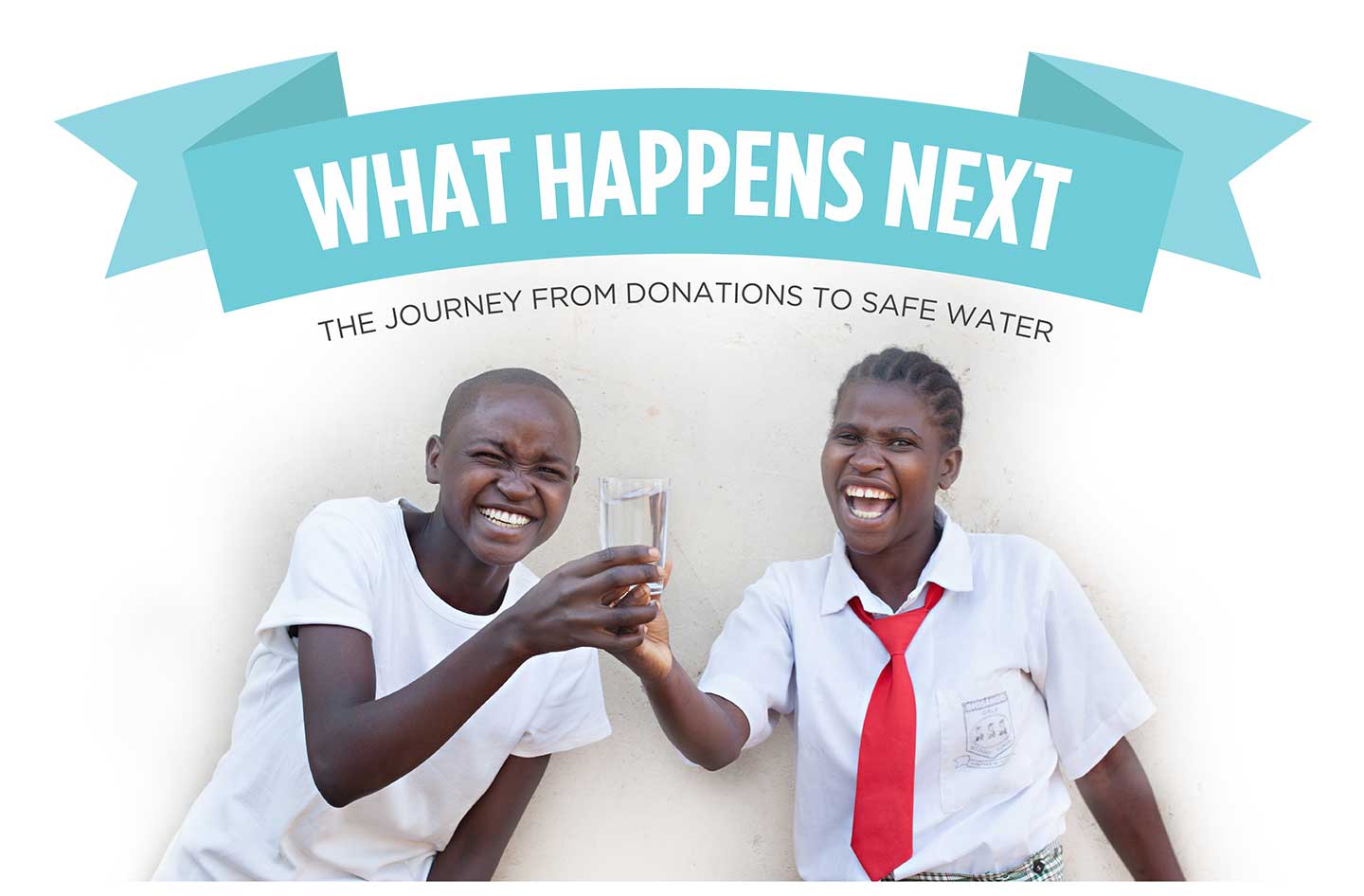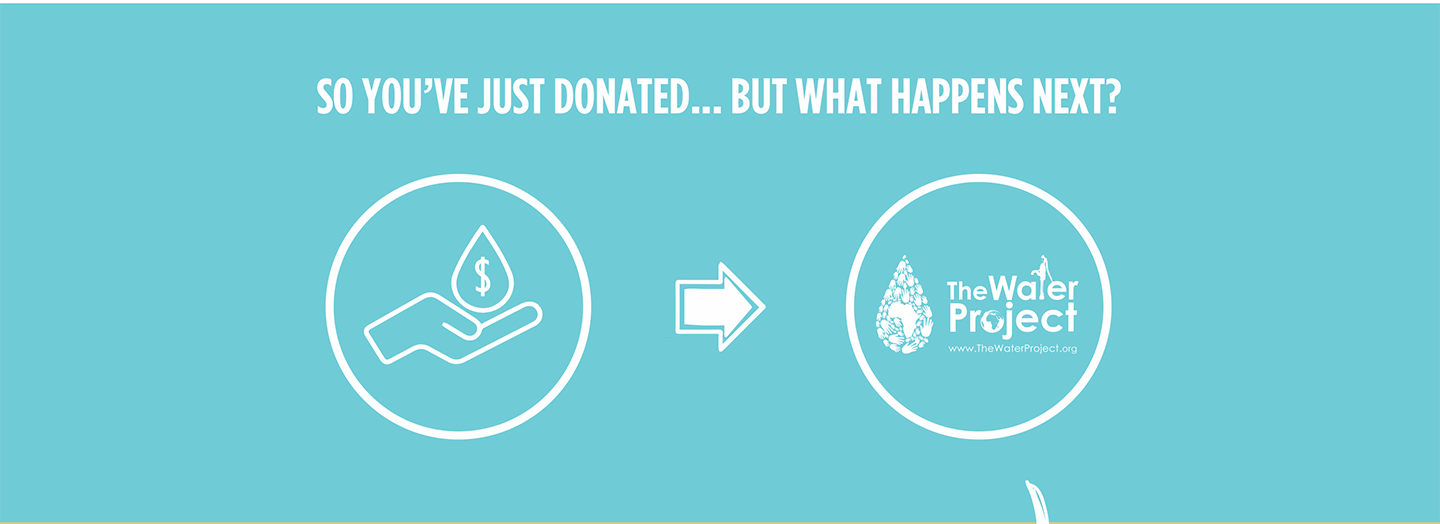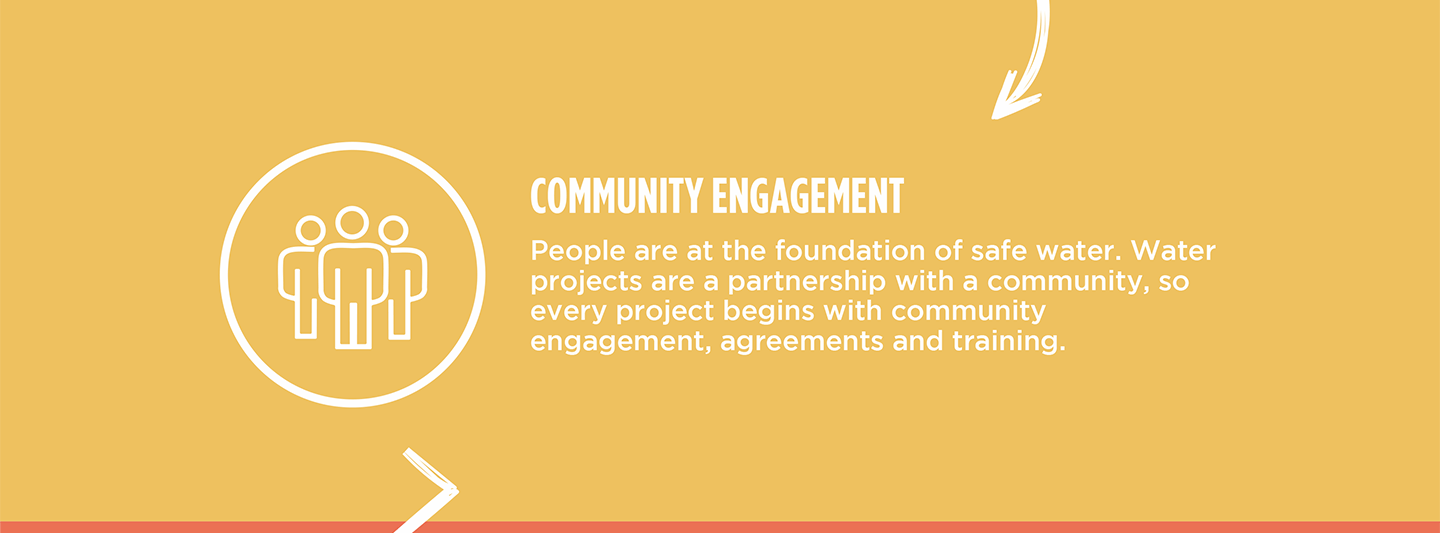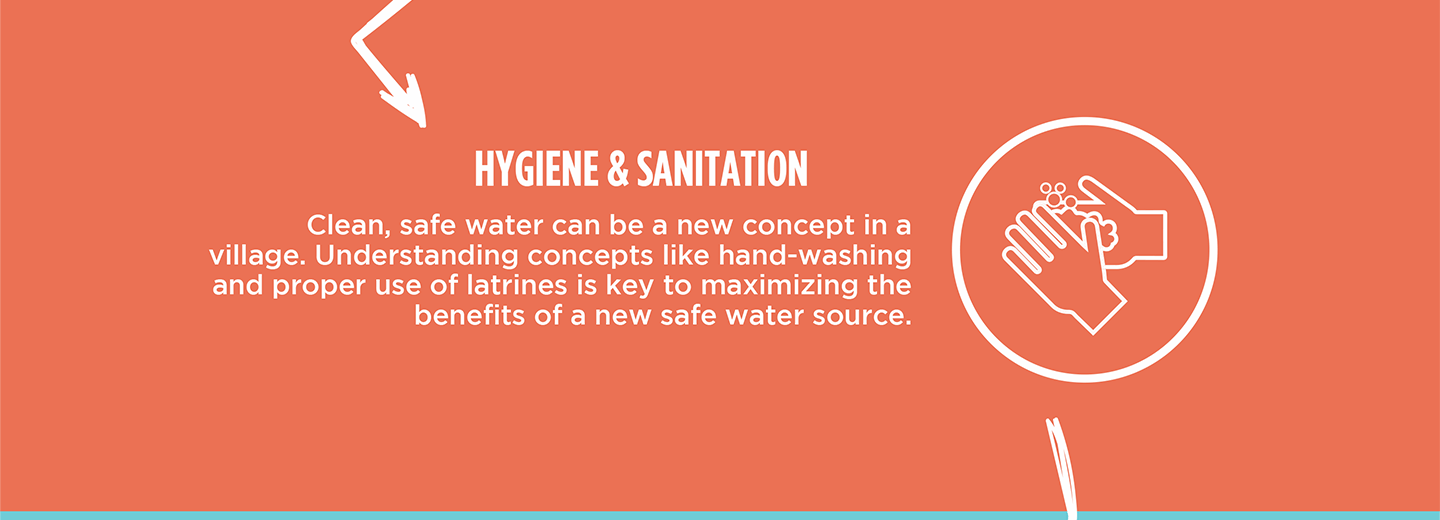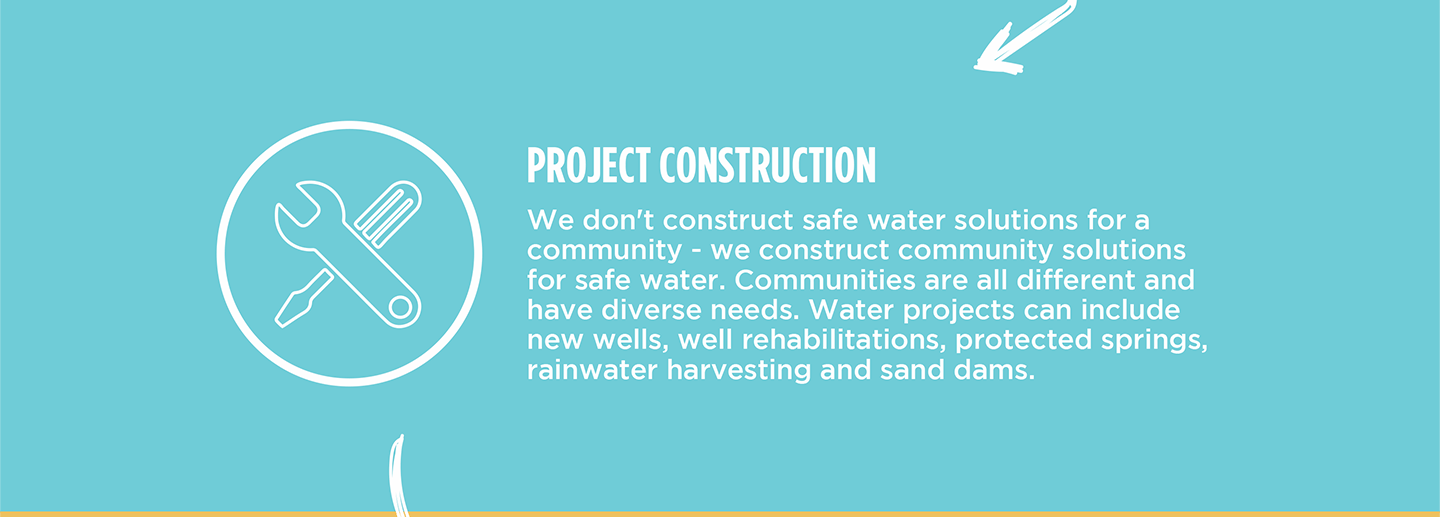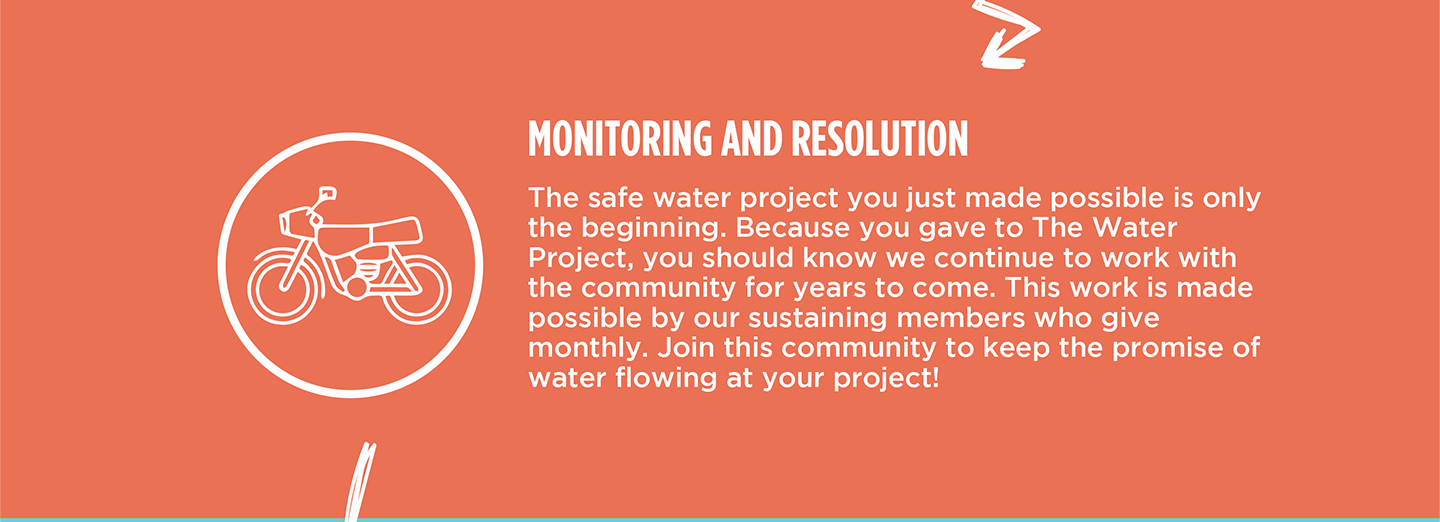For the 250 residents of Kinenabuhere, life without a safe, nearby water source is a daily struggle. This is not a new hardship—this community has gone without reliable access to clean water for over twenty years.
To meet their basic needs, community members must walk an hour to fetch water from a well in a neighboring village. It is not an easy journey either.

"There are high risks of accidents, especially for children, as they are forced to use the busy main road frequently used by vehicles," shared Field Officer Bena Nakabiri.

The long line of water containers waiting to be filled at the faraway well.
Once there, they often wait in long lines at the overcrowded well, spending precious hours each day on a task that drains their energy and limits their opportunities.
Thirteen-year-old Derrick knows this routine all too well. Every day after school, before he can eat, study, or play with friends, he makes the long trek to collect water for his family. It's a heavy burden for a child.

Derrick.
"I spend a lot of time fetching water after school. It becomes difficult for me to find enough time and energy to focus on reading my books and studying properly. I feel upset and frustrated because the long distance and long queues to fetch water make the task exhausting and time-consuming for me," declared Derrick.
For Derrick, water is not just a resource—it’s a daily obstacle that steals time from his education and his childhood.

Derrick makes the long trek to collect water.
"Fetching water takes a long time because of the long distance and constant queues, as the water point also serves the trading center. I must walk carefully along a busy road with heavy traffic, especially sugarcane lorries, which increase safety risks," he continued.
"I was pushed once while waiting in line, causing me to fall and drop my jerrycan. I even sustained minor bruises from the fall, which made the experience painful and frustrating. The adults who are often impatient and push ahead in line make it difficult for children to fetch water," lamented Derrick.

Derrick begins the long journey home carrying water. Each full jug weighs approximately 40 pounds.
But this daily struggle doesn’t have to be permanent. Together with the community, our team is preparing a lasting solution.
Derrick and the rest of the Kinenabuhere community urgently need access to a safe, nearby water source. With clean water close to home, they’ll gain precious time and energy to invest in other critical aspects of daily life—education, work, and family. For Derrick, this could be the key to finally pursuing his future dream of becoming an accountant.
Field Officer Nakabiri is confident it will improve community members' lives in other critical ways as well.
"The new waterpoint will help reduce the risk of accidents by minimizing long travel distances. It will also ease congestion at the existing water source, making access quicker and safer," shared Bena.
Not only will the waterpoint solve their water crisis, but the community will have the opportunity to band together and support one another.
"They will have the opportunity to form a savings group, which will strengthen their savings culture and financial stability," Bena concluded.
Steps Toward a Solution
Our technical experts worked with the local community to identify the most effective solution to their water crisis. They decided to drill a borehole well, construct a platform for the well, and attach a hand pump.
Well
Abundant water often lies just beneath our feet. Aquifers—natural underground rivers—flow through layers of sediment and rock, offering a constant supply of safe water. A borehole well is drilled deep into the earth to access this naturally filtered and protected water. We penetrate meters, sometimes even hundreds of meters, of soil, silt, rock, and more to reach the water underground. Once found, we construct a platform for the well and attach a hand pump. The community gains a safe, enclosed water source capable of providing approximately five gallons of water per minute. Learn more here!
Community Education & Ownership
Hygiene and sanitation training are integral to our water projects. Training is tailored to each community's specific needs and includes key topics such as proper water handling, improved hygiene practices, disease transmission prevention, and care of the new water point. Safe water and improved hygiene habits foster a healthier future for everyone in the community.
A Community-Wide Approach
In Uganda, we use a Community-Led Total Sanitation (CLTS) approach, which involves several meetings where community members evaluate their own hygiene and sanitation practices to encourage lasting change. During these sessions, natural leaders emerge, motivating the community to recognize and change unhealthy behaviors that affect everyone.
Communities then commit to ending open defecation before we install the water project. Every household builds a latrine to prevent disease and improve hygiene and sanitation in anticipation of their new water source. To support this effort, a Community Development Officer (CDO) is assigned. The CDO encourages each household to set up handwashing stations, animal pens, garbage pits, and dish-drying racks. These additions are crucial in preventing the spread of common diseases.

 Borehole Well and Hand Pump
Borehole Well and Hand Pump
 Rehabilitation Project
Rehabilitation Project










